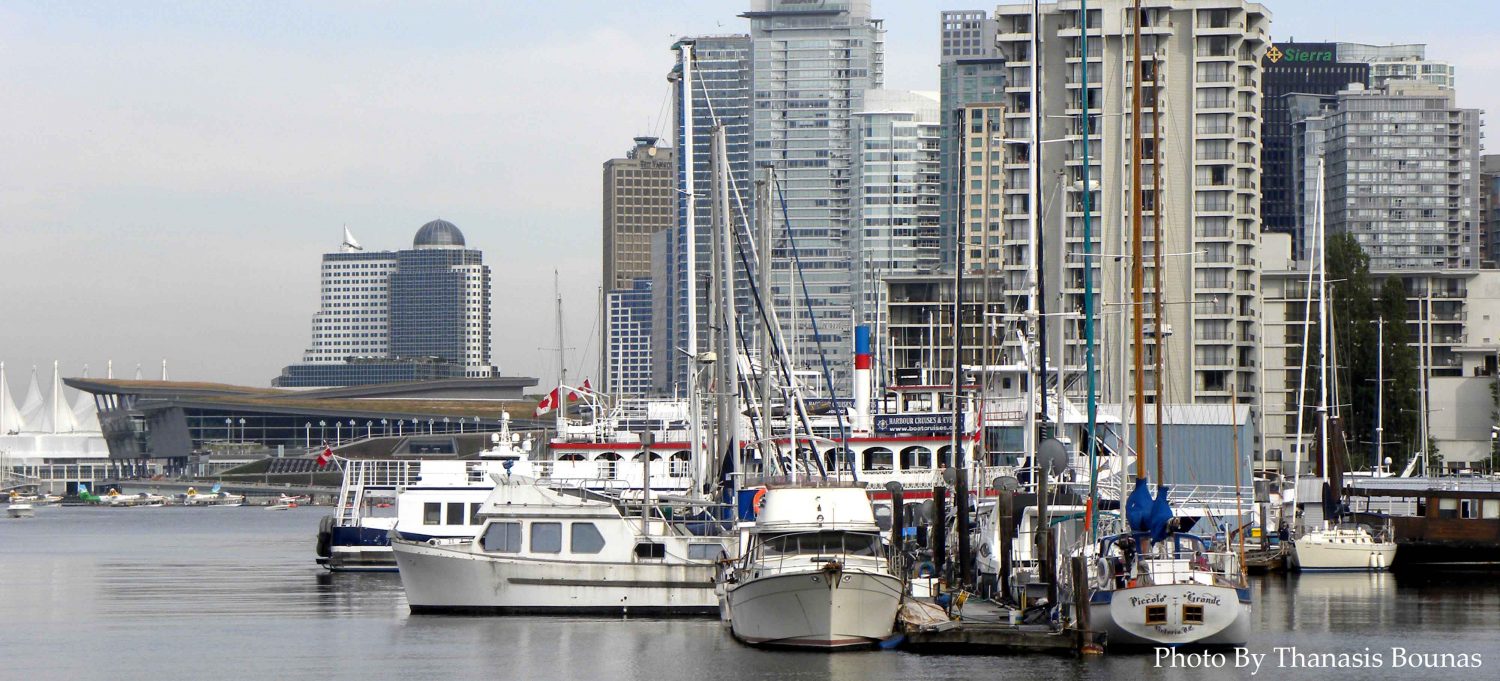
Vancouver’s architecture is a reflection of its identity: diverse, evolving, and deeply influenced by the natural surroundings. From the first timber homes of early settlers to today’s iconic glass towers that dominate the skyline, the city’s architectural story is one of contrasts and transformation.

1. The Early Structures: Simplicity and Functionality
Vancouver was officially incorporated in 1886, but development began earlier in the mid-19th century, primarily as a logging and trading post. The earliest buildings were modest wooden cabins and utilitarian structures, constructed quickly and economically using the abundant timber resources. These early designs prioritized practicality over aesthetics, built to withstand the damp, forested environment.
2. Victorian and Edwardian Influence
As the population grew and the city expanded in the late 19th and early 20th centuries, a more decorative architectural style emerged. Victorian and Edwardian homes began to appear, especially in neighborhoods like Strathcona. These homes featured tall ceilings, intricate woodwork, bay windows, and steep-pitched roofs, showcasing the growing affluence and stability of the city.
3. The Rise of the Modern Apartment Block
The post-war decades of the 1950s and 1960s brought a wave of modernist architecture to Vancouver. Influenced by global trends, and in response to urban growth, local architects such as Arthur Erickson introduced innovative concrete structures with clean lines and a strong connection to nature. Iconic examples from this era include Simon Fraser University and the Museum of Anthropology, both seamlessly integrated into their natural surroundings.
4. Vancouverism and the Vertical City
By the 1990s, Vancouver had become the birthplace of a unique urban design philosophy known as “Vancouverism.” This approach emphasizes high-density living with slim, tall residential towers that preserve view corridors and light, while being surrounded by low-rise buildings and public green spaces. The goal is to create livable, walkable communities without sacrificing access to nature.
Glass-clad buildings became the hallmark of Vancouver’s skyline, reflecting the ocean, the mountains, and the sky — blending architecture with landscape. The city is now often cited as one of the most beautiful and sustainable urban centers in the world.
5. Present and Future: Sustainability, Inclusion, and Innovation
Today, Vancouver’s architecture continues to evolve with a strong focus on sustainability, energy efficiency, and cultural inclusion. New developments like The Stack — Canada’s tallest zero-carbon commercial building — show the city’s commitment to environmental innovation.
Simultaneously, there’s growing recognition of Indigenous design principles, with new projects integrating First Nations cultural elements. Preservation efforts are also increasing, ensuring that historic homes and early 20th-century buildings are not lost to modern development.
A Mosaic of Heights, Materials, and Stories
Vancouver isn’t just a city of gleaming towers. It’s also home to cozy character houses, garden-lined streets, streetcar heritage, urban forests, and buildings that tell stories of migration, industry, resilience, and renewal. The city’s architectural journey proves that growth can happen without erasing the past — and that buildings can speak to both place and time.






Be the first to comment